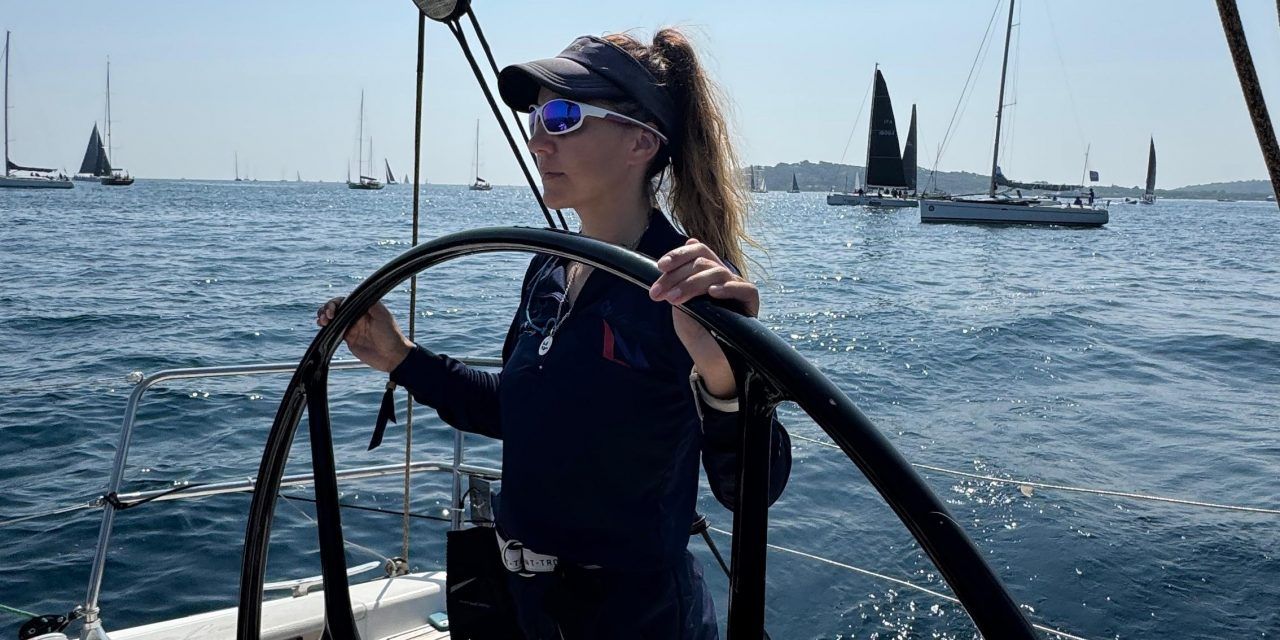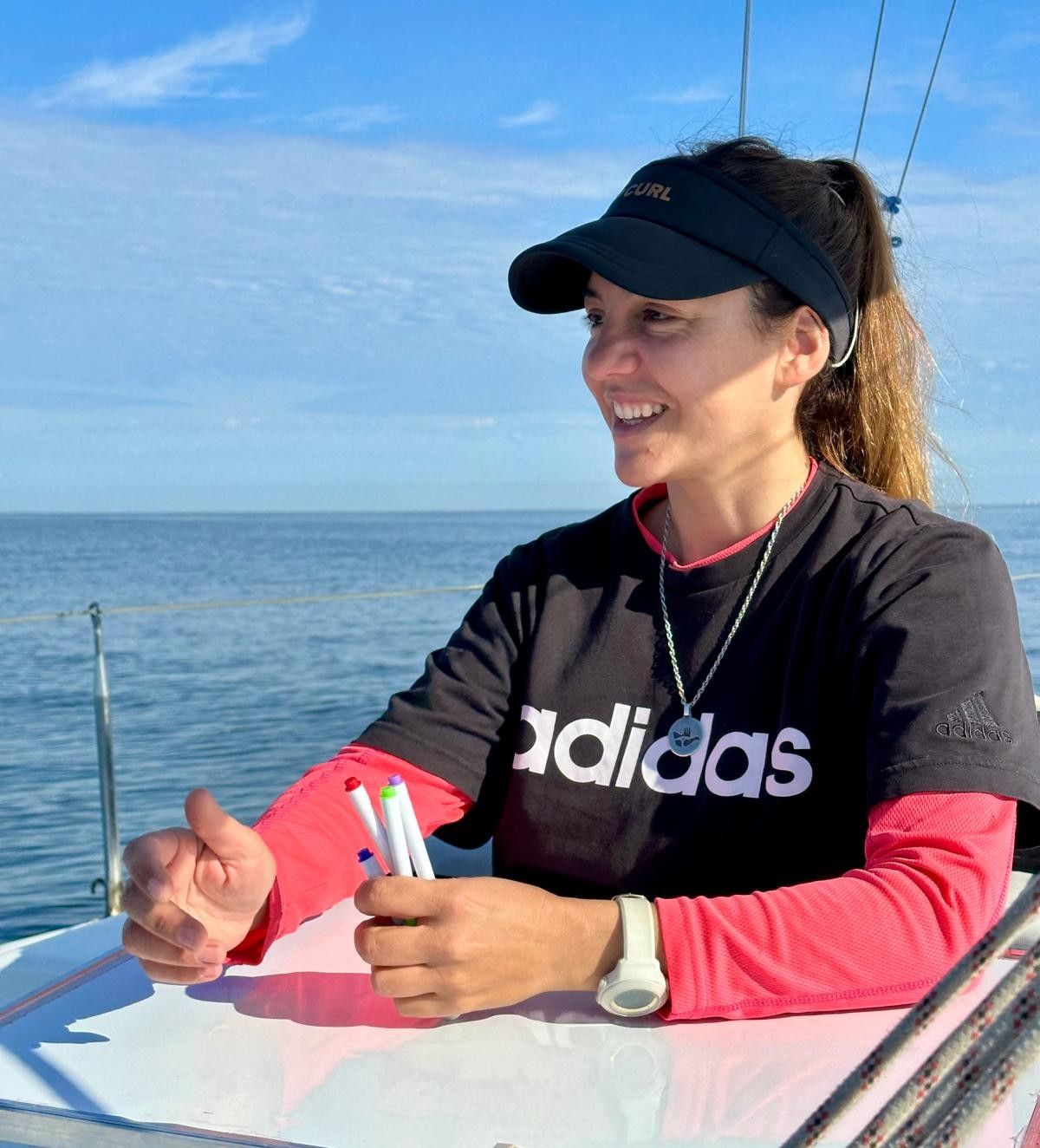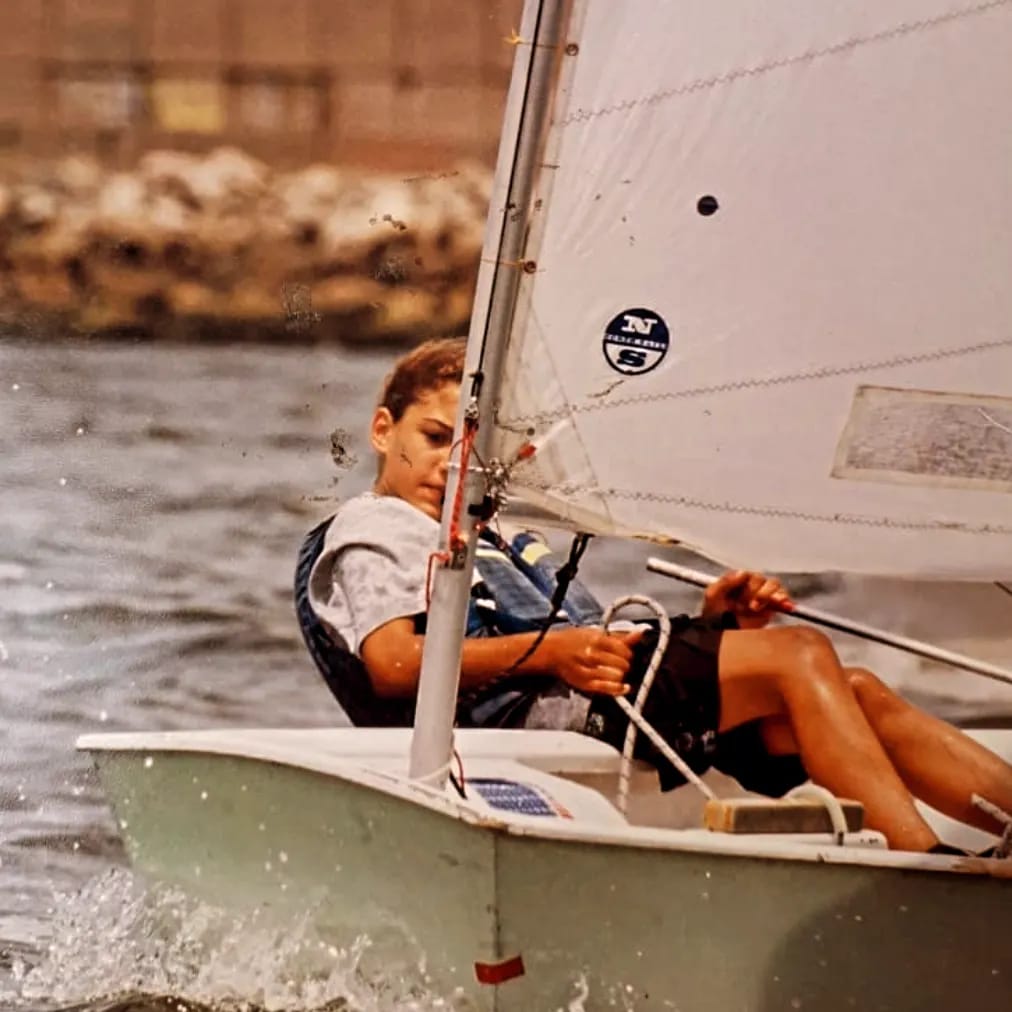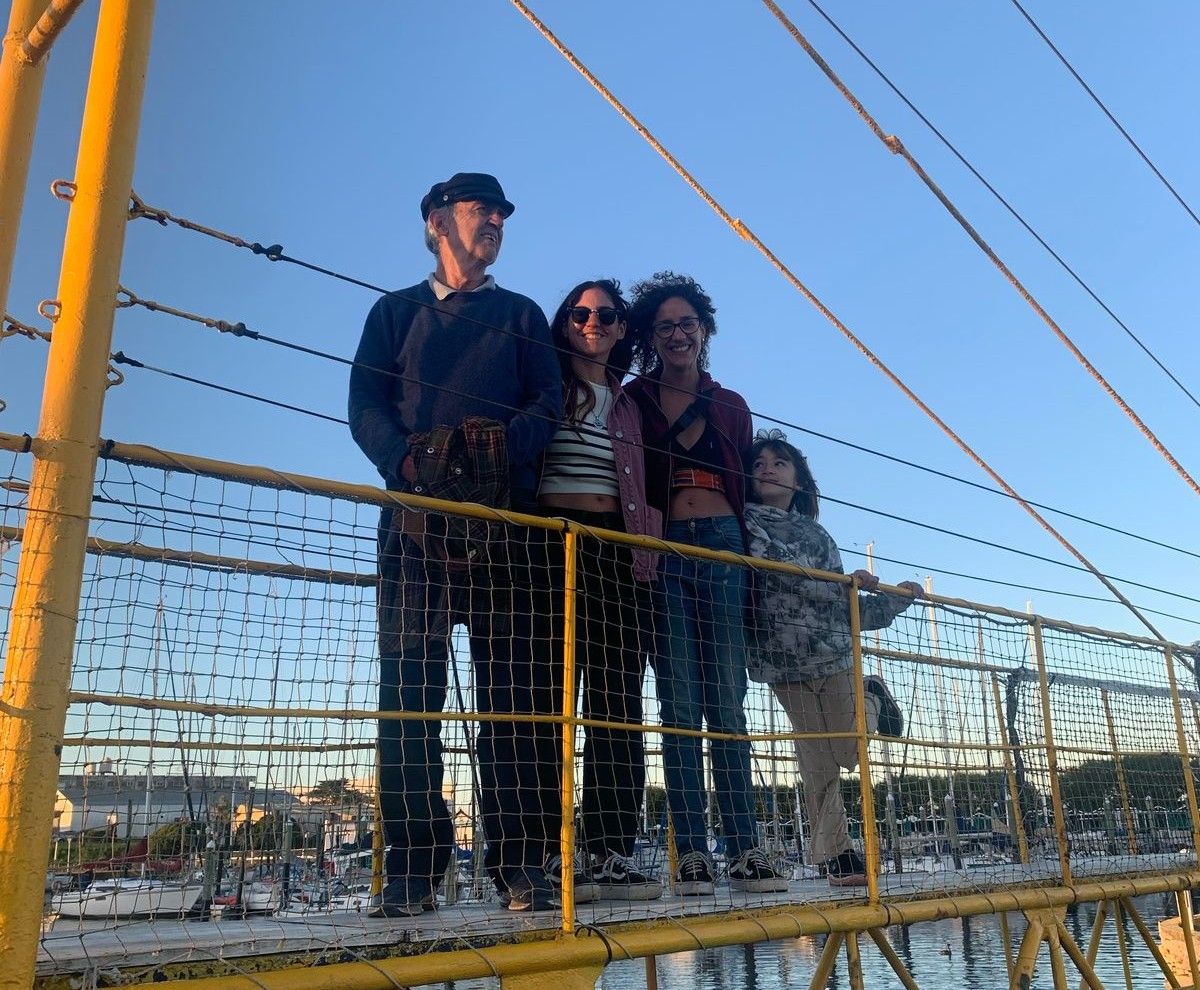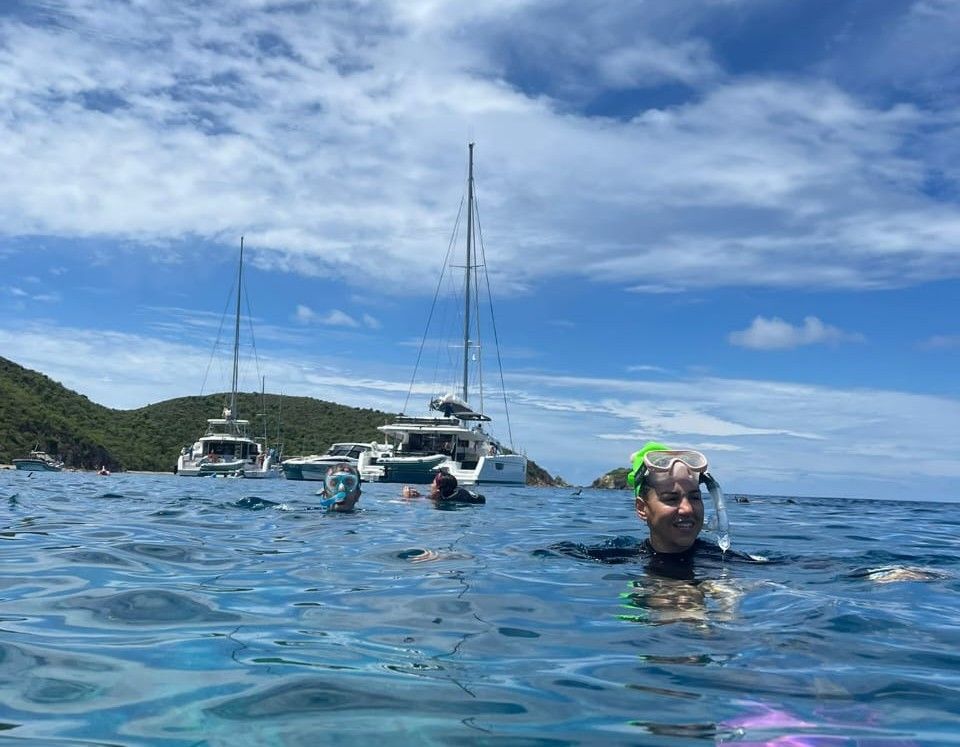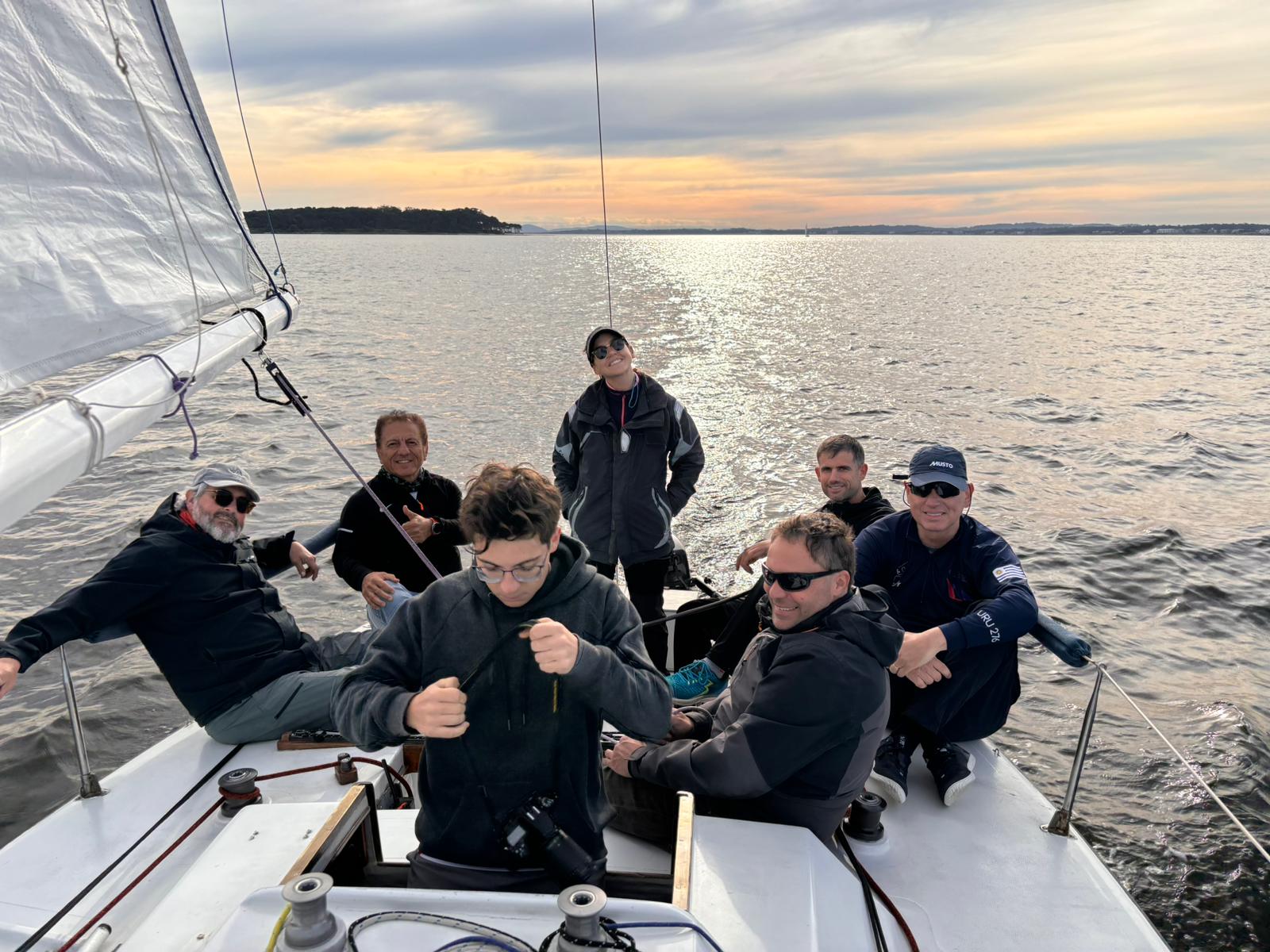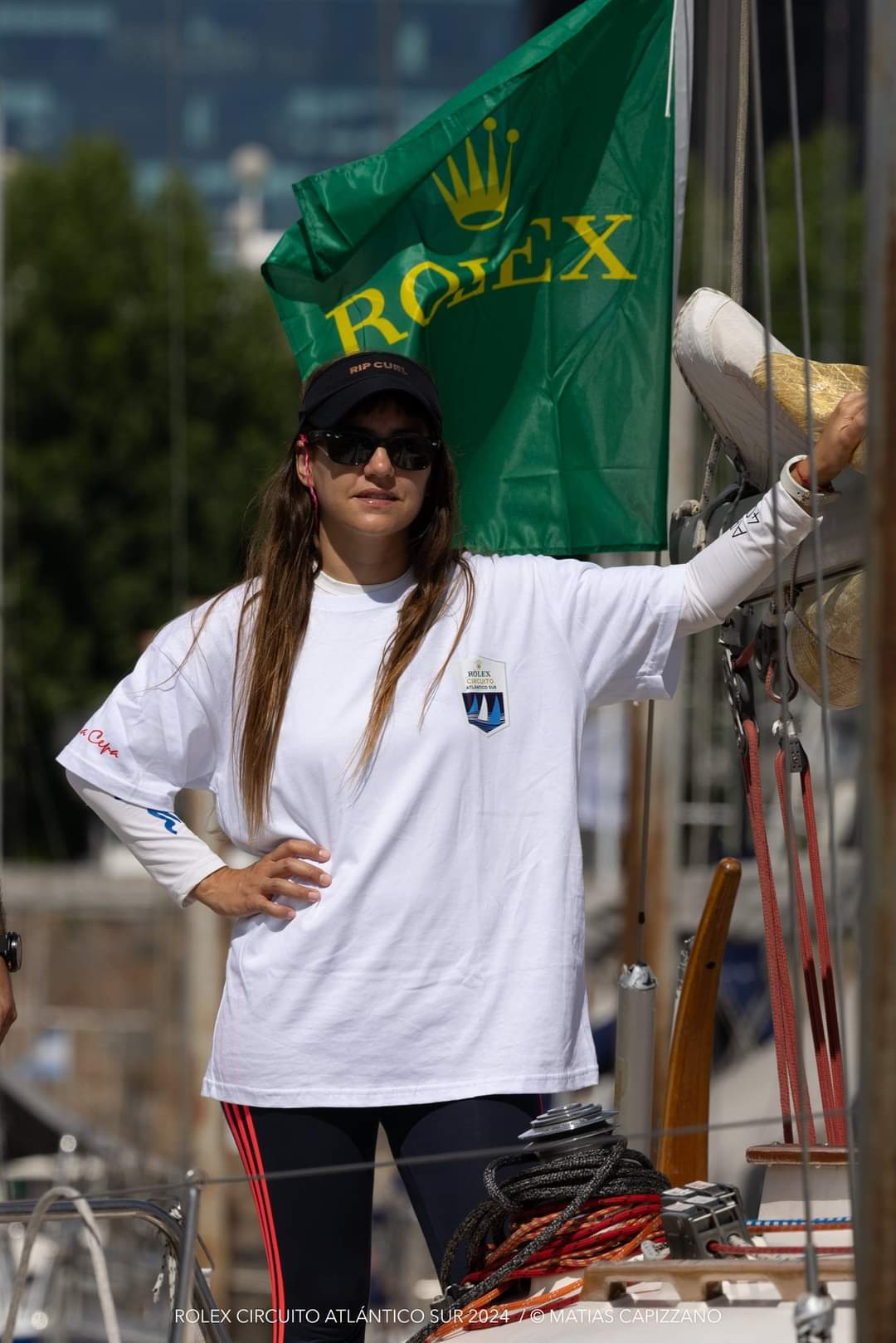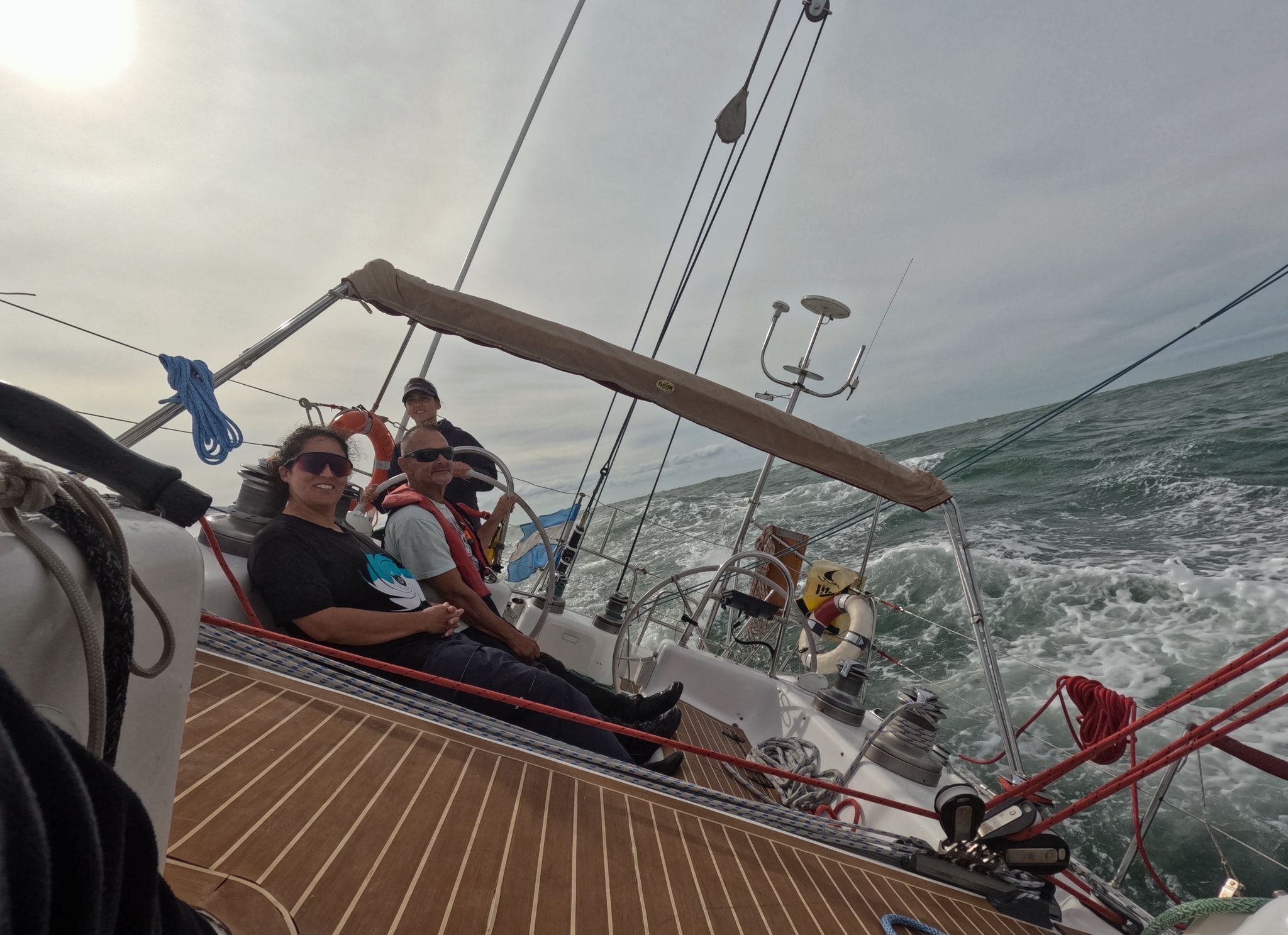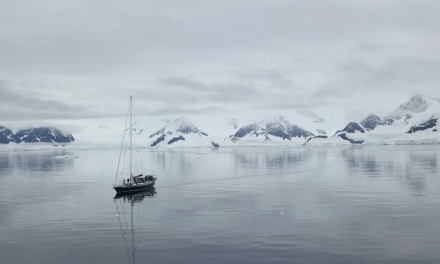Lula Monjeau: “The sailing school is the seed that allows us to do many other things”
A true family of sailors: that’s the first thing you think of when you meet Lucía Monjeau, daughter, granddaughter, and niece of captains who, aboard their sailboats of all types and sizes, sailed the seas and rivers, participated in regattas, and undertook voyages from the city of Mar del Plata, in the southern Buenos Aires Province, where, emerging from its cliffs and breakwaters, dolphins and sea lions mingle with the grand houses of an aristocratic past, the popular union-run hotels, countless fishing vessels, and the crashing waves of a perpetually active port.
In that same port, more precisely at one of its most emblematic institutions, the Mar del Plata Yacht Club, Lula—as she is called—began sailing in her early childhood. Her parents and uncles, meanwhile, were winning championships or training teams. However, with few other options available, from a young age she was terrified of sea lions (there are entire colonies in the port), but she bravely took to the water on her small sailboat, an Optimist dinghy, amidst the turquoise-green waves and the southeast winds:
“When we were little, my twin sister and I were taken to a sports orientation school at the club, but they didn’t give us many options: in rowing you go backwards like a crab, swimming is very individualistic, tennis is no good either because you’re sweltering in the heat, but sailing is brilliant (she laughs). That’s why we both chose sailing at six years old. I think she enjoyed it because she was always more playful, while I was very competitive and demanding. Our first coach was Matías Capizzano.”
But the waves—and the years—passed. Lula’s father had studied Medicine but couldn’t finish his degree. Therefore, for her, as an adult, one way to continue that legacy was to become a doctor. She studied for four years at the National University of La Plata, but from halfway through her studies she had stomach problems. Her mother was adamant. “Lucía, change your major if you’re not happy.” Shortly after, she met a girl who was studying architecture and became fascinated with blueprints and measurements for designing houses and buildings.
While studying architecture in the city of La Plata (about 60 kilometers south of Buenos Aires), she resumed her involvement in sailing, which she had stopped in 2001 due to the economic crisis in Argentina. From that time on, from her base in La Plata, she began coordinating the Adapted Sailing Foundation for girls and boys with disabilities and from low-income families.
Interview with Lula Monjeau
What were those early years in navigation like?
Although I was initially afraid because I had a real phobia of sea lions, when I was about 10 years old I started noticing that during the summer, young people from all over the country and the world came to Mar del Plata to participate in sailing regattas, and I became increasingly enthusiastic about it. I discovered that there was a whole world to explore, I started competing in championships, and I became more involved with the sailing community, not just on weekends, but also with my fellow club members. It was a community that I really enjoyed being part of.
Later, when we were 14 or 15, my sister and I switched to the Europa class, but that class stopped being an Olympic event and eventually disappeared. We also tried Cadet and Laser, but we were too small and didn’t have many opportunities to continue. In 2001, the economic crisis hit very hard, we had to leave the club, and I stopped sailing.
How did you end up working in adapted sailing?
During those years of crisis, I stopped sailing, but at 18 I moved to La Plata to study medicine. For the first time, I started to look at sailing from the outside; I missed it a little, and it even hurt a bit. I would occasionally go out on boats, but it wasn’t the same. But not long after, around the age of 22, I started coaching Optimist dinghy sailing again during the summers I spent in Mar del Plata. Around that time, I met a group from the Argentine Adapted Sailing Foundation, and then I began coordinating a similar program at the La Plata Yacht Club.
“The Foundation was a turning point. Looking back, sailing meant, for me, arriving first, sailing alone, and following the rules. But after the Foundation, sailing began to mean changing the rules, arriving with others, and creating something new”.
What did your task consist of?
That was also an important legacy, because my mother worked for many years as a special education teacher. It was like combining the legacies of the entire family: education, disability, and sailing. It was wonderful because it wasn’t about perfecting the technique, but rather about enabling everyone to go sailing. Most of the participants had some kind of disability, and they were also very poor.
So it was very important for them to gain self-confidence, to get out into the open air, to experience a different environment, to float on the water, and to have some fun: we had students in wheelchairs who sailed beautifully, a blind boy who taught us how to steer and orient ourselves according to the wind direction, and also students with Down syndrome or on the autism spectrum whose progress and development we witnessed firsthand—it was truly amazing. It was a very beautiful experience that I had for many years.
What happened next?
Until then, I didn’t know anyone who had taken up sailing purely for enjoyment, or who had taken a formal sailing course. For me, it seemed natural that you only sailed if you were born into a sailing family. But then I met a girl who had taken a sailing course in Quilmes and had become very enthusiastic about it, so we met at the Adapted Sailing Foundation. She became so passionate about it that she started studying and learned a great deal. We became very good friends, and later, she became my business partner, Enriqueta. After that, I graduated as an architect and moved to New Zealand to live there for a few years.
But they remained friends until today, right?
Yes, I remember that the first time we did something unrelated to sailing was when we got together to watch a movie: it was the documentary about Laura Dekker’s voyage, the youngest woman to sail around the world solo. The amazing thing is that something incredible happened to us this very week, related to that very topic!
How did they come to create their own school in Uruguay?
In New Zealand, I started dating a Uruguayan man, and in 2021 I moved to Montevideo. My friend came with me. Then we were offered jobs as Optimist and Laser sailing instructors at a sailing school in Colonia del Sacramento. We would travel there every Saturday and Sunday to train and give lessons to the kids. After that, we were offered the opportunity to teach on a keelboat, and we started our own sailing school. From there, we also began giving lessons in Punta del Este and Montevideo, using another small sailboat we acquired. Our goal was also to organize international regattas for students who could practice sailing on those boats.
The school is the foundation that has allowed us to do so many other things, and it embodies the philosophy of sailing that I wanted to promote: that anyone can do it, even if they haven’t always been part of that world.
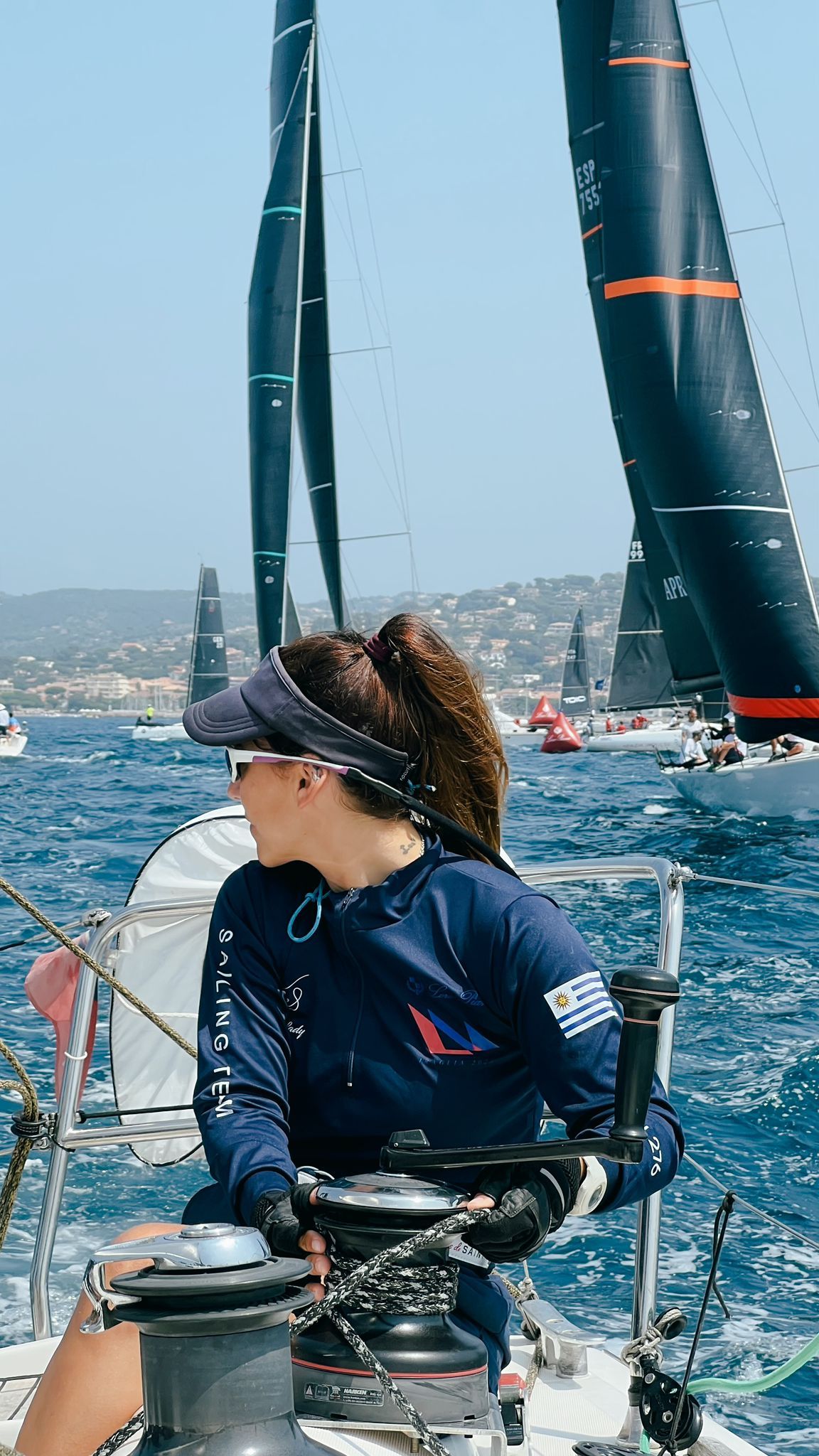
Which races did they participate in?
The first one was Les Voiles de Saint-Tropez: we rented a Dufour 40 from a Uruguayan friend who keeps it in immaculate condition. From then on, we decided to participate in one or two regattas a year with our students. Later came the King’s Cup, the Barcolana—with over 1,500 boats—and the Venice Regatta, which was incredible because we sailed right up to St. Mark’s Square with our sails fully hoisted, which is the only time of year that’s allowed. That same year, some students from Uruguay bought a boat in Europe, and we sailed it from Cape Verde to Punta del Este.
Did they also hold regattas in Uruguay or Argentina?
Yes, for the past five years we’ve participated in the Rolex Fastnet Race, which connects Buenos Aires to Punta del Este. We try to charter different boats depending on the number of students participating in the regatta: this year we had so many students that we managed to secure the “Tinto,” a beautiful 50-foot yacht. After the race, we went to the Caribbean, where we chartered a Lagoon catamaran and cruised around the islands for ten days. Now we’ve purchased a Hanse 42 in Germany, which will be available for the school starting in December.
And why did you tell me that some amazing things happened this week as well?
Because Enriqueta is bringing the boat we bought from Germany; she stopped in the Netherlands, where she’s exploring the canals with another part of our team and some of the course participants. Meanwhile, here in Uruguay, I received a message out of the blue from a man looking for some supplies for his boat—someone had given him my phone number. I wasn’t entirely clear what he wanted, but when I looked up who he was, it turned out to be Laura Dekker’s father. I wrote to my partner to tell her who was in Uruguay, and that we had seen his daughter’s documentary and loved it. We couldn’t believe it! I don’t know, we talked on the phone with him for two hours, and then Enriqueta ran into Laura Dekker’s boat in the Netherlands, which was also traveling along that stretch of canals.
So what happened?
On the same day the father contacted me, he gave me his daughter’s phone number, and my friend went with our students to visit her on her boat, since she lives there with her husband, and we hadn’t known about it. They were actually returning to New Zealand. Meanwhile, I spent the entire week with the father, helping him take students out on his boat and enjoying barbecues with him: he was an incredible person, so simple, warm, and humble. I was completely captivated, especially since he built the boat himself. We ended up organizing talks for all the students. It was such a crazy coincidence, happening in different parts of the world. We couldn’t believe how chance and fate could bring us together on the same day with all this amazing story.
Links:
Punta Yachting: https://puntayachting.com/
Punta Yachting IG: https://www.instagram.com/punta_yachting/
From “Navegantes Oceánicos (Bluewater Sailors)” we thank Lulu Monjeau for her contribution to this interesting interview, and we admire her drive and entrepreneurial spirit in the world of sailing.
We wish her all the best with her sailing school and fair winds for her future voyages.


